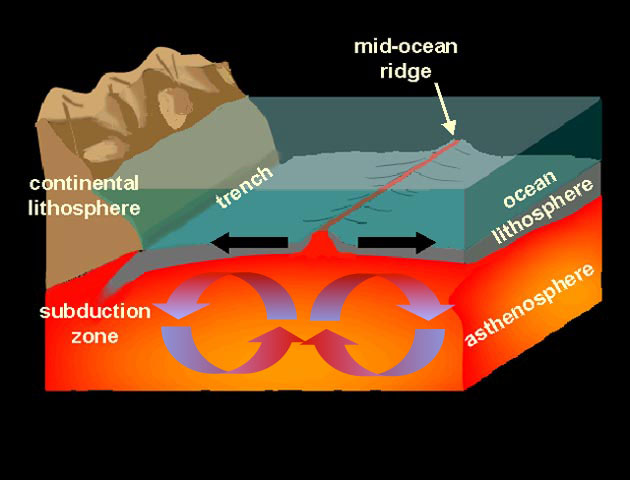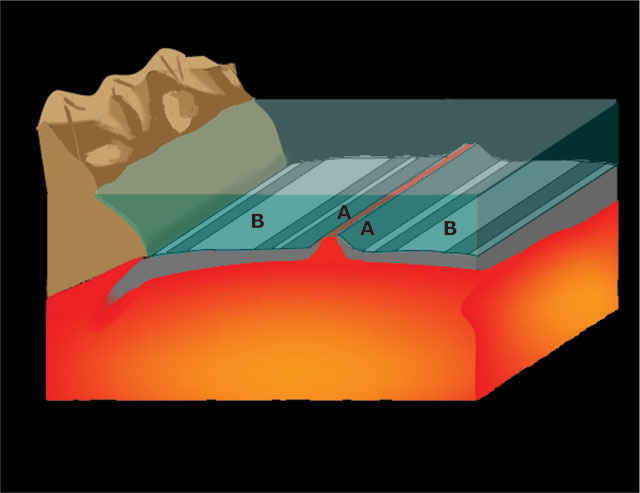
Plate Tectonics Theory Development (Part 3)
Seafloor Spreading
Geologic puzzle: How could continents move around the earth’s surface? In the 1950s and 1960s, ocean research suggested that seafloors move away from mid-ocean ridges, carrying continents with them.
• The hypothesis of seafloor spreading proposed that magma rises to the surface at mid-ocean ridges, creating new seafloor. As the seafloor rocks spread away from the mid-ocean ridge, they become cooler and more dense, finally sinking or subducting into the earth’s interior.

Magma from the earth’s interior rises along the mid-ocean ridge, then cools to form new seafloor rock. The older seafloor spreads away, becomes cold and dense, and sinks or subducts back into the earth’s interior. The oldest seafloor rocks are found farthest from the mid-ocean ridge. The oldest known ocean rocks are about 200 million years old. (Diagram by Phyllis Newbill)
• Evidence supported seafloor spreading. Magnetic signatures in seafloor rocks indicated that rocks formed at the mid-ocean ridge and spread apart as new seafloor was created.

Over the course of the earth’s history, its magnetic poles have reversed many times. These reversals are recorded in magnetic minerals that are common in seafloor rocks. Geologists studying the seafloor in the 1950s and 1960s discovered that magnetic signatures on the seafloor were mirror images of the same signatures on the other side of the mid-ocean ridge. (Diagram by Phyllis Newbill)